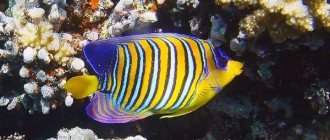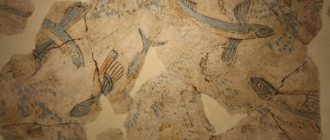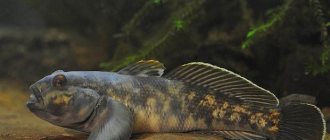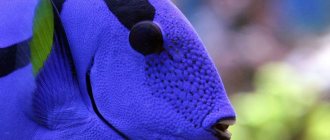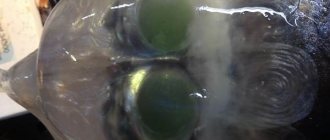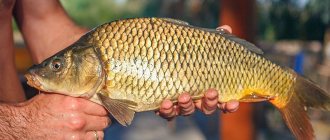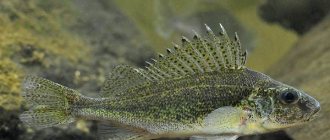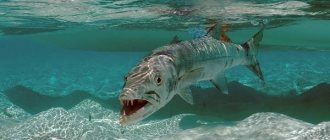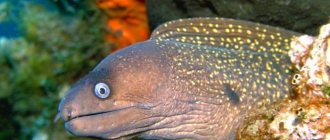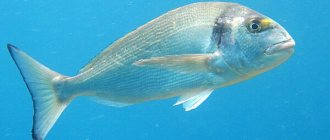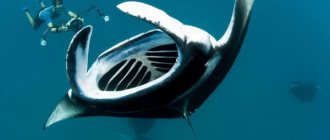There are several versions of why cod fish is called that way. The first is that in winter they brought it frozen from Arkhangelsk, and when the fish was unloaded from the sleigh, it crackled. But this is just a legend.
What tastes better?
- Tilapia 83%, 39 votes
39 votes 83%39 votes - 83% of all votes
- Pangasius 17%, 8 votes
8 votes 17%
8 votes - 17% of all votes
Total votes: 47
16.01.2020
- Tilapia 83%, 39 votes
39 votes 83%39 votes - 83% of all votes
- Pangasius 17%, 8 votes
8 votes 17%
8 votes - 17% of all votes
Total votes: 47
16.01.2020
×
You or from your IP have already voted.
The second story, more plausible, is related to the fact that her swim bladder contracts, making sounds. Therefore, something like thunder or crackling is heard from schools passing in the water.
What kind of fish is cod and where does it live?
Description
All codfish have characteristic, similar external features that distinguish them from other marine life. They have a classic spindle-shaped body, almost always have 2-3 fins on the back, two gill fins and two anal fins.
@ Vlada.Z -depositphotos.com
Cod fish do not have sharp, spiny bones on their fins. Almost all specimens have an unpaired long or short antennae growing on the chin. Fish scales are round, small, and easy to clean, so their bodies are covered with protective mucus.
Characteristic
Cod fish need fairly icy water from 1 to 10° Celsius, so representatives of the family can be found in almost all sea waters of the northern World Ocean. However, Northern European, Asian and North American rivers and lakes are preferable for burbot.
The largest number of cod are found in the Barents, Bering, Norwegian, White, Japanese, and Okhotsk seas, that is, in the Eastern Atlantic, Arctic and Pacific Oceans. The Baltic Sea is habitat only for Baltic cod, and the coast of Greenland is habitat for Greenland cod. Some species of cod also live in the Black and Mediterranean Seas.
Several species of this family are also found off the South African, South American, and New Zealand coasts.
Health benefits and harms of cod
As a dietary product, cod definitely has great benefits when consumed. Sea fish fillet, rich in polyunsaturated fatty acids, has a positive effect on the nervous system, improving memory and speed of thought, protecting against depressive disorders.
Cod liver neutralizes dangerous cholesterol in the blood, preventing the development of atherosclerosis and other cardiovascular diseases.
Cod is essential for women's health - the selenium, zinc and sulfur it contains improves the condition of hair and nails and makes the skin more elastic. During the period of planning, pregnancy and breastfeeding, you can safely eat fish. Pregnant women benefit from cod even more than anyone else.
Strengthening the immune system, strengthening the musculoskeletal system, normalizing blood pressure - these beneficial effects of cod pulp are necessary for both women and men.
A nutritious diet for children is unthinkable without fish and seafood - they are necessary for the development of the nervous system and increasing the body's resistance to infections.
But even such a harmless fish has a list of contraindications for consumption. This is an individual intolerance to cod and an excessively high level of vitamin D in the body. In the next section we will talk about whether it is possible to eat cod for various diseases.
Predator or not
Cod fish are predators or carnivores. But they become such only by adulthood, that is, by 3-4 years. Until this time, the young swim in the bottom space and eat microplankton and small crustaceans.
Just as shellfish are a source of food for cod, so young cod serve as a diet for shellfish.
What does cod eat?
What does cod eat? Her favorite delicacy is live fish. She chooses food depending on the seasons. Thus, in winter the food consists of small herring, in spring - cod, capelin, and in summer crustaceans and sedentary elasmobranch mollusks, which are numerous at this time of year, are added to its diet.
Cod fish often have cases of anthropophagy - eating smaller fish of their own or another species.
@witoldkr1-depositphotos.com
Price
Cod is also unique because all its parts are eaten by humans and animals. Cod meat are used directly for cooking or for processing . The most in demand at the fish market are:
- Frozen cod is the main form of fish supply to the market. In retail, whole frozen fish costs about 300 rubles. per kg.
- Cod fillet is one of the best products on the fish market. Frozen fillet, depending on the type (skinless, glazed, etc.) costs from 430 to 530 rubles. per kg.
- Dried cod is a type of fish processing that probably appeared in prehistoric times. Despite the emergence of methods that guarantee long-term preservation of fish, drying remains in operation. In the Russian north it is called bakalao.
- Klipfisk is cod prepared by drying salted fish. In Russia, cod prepared in this way cannot be bought immediately. European countries have been importing clipfisk cod from Norway for centuries.
- Stockfish is one of the variants of clipfish with less salt and a unique drying method.
- Smoked cod is a delicious fish . This is a valuable product with a delicate taste. Hot smoked fish is not cheap - about 700 rubles. per kg.
- Cod liver is an undeniable delicacy. Cod is a fish in which fatty deposits accumulate in the liver. Cod liver is 70% fat; in addition, it contains essential fatty acids and all essential vitamins. For a 120-gram jar of liver you will have to pay about 180 rubles.
- Cod tongues and cheeks are a traditional Norwegian product that recently appeared on domestic shelves. Although the Pomors are no worse than the Norwegians at harvesting these cod organs. A package of frozen cod tongues weighing 600 g can cost about 600 rubles.
- Cod caviar is a healthy and tasty product, very reasonably priced. A jar containing 120 g of cod roe will cost 80-100 rubles.
The meat and by-products of many sea fish have decent taste and dietary qualities. In terms of usefulness, cod flesh is in the top ten. It is recommended to people:
- suffering from arthrosis, arthritis, and other diseases of bones and joints,
- those wishing to correct a vitamin imbalance,
- those who want to support and heal their heart,
- experiencing nervous overload, falling into depression,
- those who want to increase their immunity and improve their quality of life.
Character and lifestyle
Cod fish usually move in compact schools. The single freshwater burbot is the only exception of its kind.
Habitats directly affect the lifestyle of cod. Thus, Pacific cod practically does not migrate, and the Atlantic species (the largest cod) moves up to one and a half kilometers back and forth in one season to spawn.
Cod drifts in deep cold waters, but when chasing prey, it rises to the upper layers of water. Not being essentially a schooling fish, it gathers in large schools during spawning or in places where large amounts of food accumulate.
History of origin
If we look at the issue from this side, we can see that the Norwegians occupy the first place. The first description appears many thousands of years ago. They are one of the first to mention dry cod. It was originally dried for sailors, so that there would always be food that would not spoil for a long time.
After this, Norway brought it to the international market, which quickly appreciated all the positive qualities of the product. This is how dried fish spread. After Norway, America and other countries began to supply fresh and frozen fish. Then the snow, of which there was quite a lot, came in handy. It served as a refrigerator to prevent the fish from spoiling.
A little later, consumers appreciated all the positive characteristics of cod liver and began to cook it as a waste-free production.
Spain also appreciated all the positive qualities long ago. The influence of churches was especially great when it was forbidden to eat meat during Lent. They sailed on ships to the shores of the United States of America. Later, England and Great Britain followed suit.
pixabay.com
The specimen dried for a long time. To do this, the fish was hung by the tail for several months. She lost more than 70 percent of her weight. Only after this was it removed and beaten until the cod became soft.
Storage took place in barrels. The product does not spoil and was amazing in taste. Many scientists suggest that cod lives for more than 100 million years. During this time, it changed its habitat from warm to cold waters. But the reasons are not specified. Judging by several species that live near warm shores, it turns out that cod is quite comfortable even at above-zero water temperatures.
Data:
- one of the most adaptable fish, some individuals live in the cold, some in the warm, there are individuals in fresh water and lakes;
- because of cod there was a war that determined the maritime boundaries of states;
- saved the Pomors in the year of famine, when there was no harvest;
- The name could have been derived from its main characteristics: after drying, the meat cracks.
Reproduction and lifespan
It has been established that some species of cod feed in one place and spawn in another. Other species go to breed in desalinated water bodies.
Cod are one of the most fertile fish species, and they begin to lay eggs only when a certain amount of fat has accumulated in the liver. But this happens only 3-4 times in a lifetime.
Different members of the family carry eggs in different ways. The Atlantic cod species spawns on the Norwegian Lofoten Islands only from 8-9 years of age. Representatives of Pacific cod reproduce from the age of 5-6 years. Arctic and Kildin cod breed at the age of 4 to 5 years, and pollock is ready to spawn at 3-4 years.
An adult female spawns approximately 8 to 10 million eggs in one mating season. Their spawning period begins in early spring. Adult males and females gather together at this time. The eggs are spawned at a depth of approximately 100 meters in measured doses, even for a long time until June. At the same time, male cod fish swim nearby and inseminate the emerging eggs. The eggs sink deeper and attach to the vegetation growing at the bottom.
Having spawned, the fish also return in races to their feeding grounds; on the twentieth day, fry emerge from the eggs and are carried by currents throughout the ocean. For the first 2-3 years of life, their habitat is the bottom, where they eat small crustaceans and plankton.
The lifespan of cod is from 30 to 35 years, and during this time its length can reach almost 2 meters (it grows almost all its life). In industrial fishing, five-year-old fish up to 80 cm long and weighing up to 5 kg are caught.
@witoldkr1-depositphotos.com
Chemical composition
Cod is an ideal fish for people who are watching their figure and counting calories.
It contains a minimum of fat with a maximum amount of nutrients (vitamins, minerals, phospholipids). White dense fish meat contains 19% protein and 0.4% beneficial triglycerides. Table No. 1 “Nutritional value of cod meat and liver”
| Name | Content per 100 grams of product, milligrams | |
| Meat (boiled) | Liver (canned) | |
| Calorie content | 69 calories | 613 calories |
| Water | 82.1 grams | 26.4 grams |
| Fats | 0.6 grams | 65.7 grams |
| Squirrels | 16 grams | 4.2 grams |
| Carbohydrates | 0 | 1.2 grams |
| Cholesterol | 0.04 grams | 0.25 grams |
| Ash | 1.3 grams | 2.3 grams |
| Saturated fatty acids | 0.1 gram | 10.6 grams |
| Organic acids | 0 | 0.2 grams |
| Mono- and disaccharides | 0 | 1.2 grams |
The energy value of cod depends on the method of cooking: salted - 98 kcal, stewed - 101 kcal, fried - 111 kcal, hot smoked - 115 kcal, grilled - 172 kcal.
Fresh fish can only be purchased at the places where it is caught, since its meat is not suitable for long-term transportation; in other cases, it is immediately frozen and salted. Table No. 2 “Chemical composition of cod meat and liver”
| Name | Content per 100 grams of product, milligrams | |
| Meat (boiled) | Liver (canned) | |
| Vitamins | ||
| Retinol (A) | 0,01 | 4,4 |
| Nicotinic acid (PP) | 2,3 | 1,8 |
| Thiamine (B1) | 0,09 | 0,05 |
| Riboflavin (B2) | 0,07 | 0,41 |
| Pyridoxine (B6) | 0,2 | 0,23 |
| Folic acid (B9) | 0,0013 | 0,11 |
| Cyanocobalamin (B12) | 0,0016 | 0 |
| Ascorbic acid (C) | 1 | 3,4 |
| Cholecalciferol (D) | 0 | 0,1 |
| Tocopherol (E) | 0,9 | 8,8 |
| Biotin (N) | 0,01 | 0 |
| Macronutrients | ||
| Potassium | 340 | 110 |
| Phosphorus | 210 | 230 |
| Sulfur | 200 | 42 |
| Chlorine | 165 | 165 |
| Sodium | 55 | 720 |
| Magnesium | 30 | 50 |
| Calcium | 25 | 35 |
| Microelements | ||
| Zinc | 1,02 | 0,7 |
| Fluorine | 0,7 | 0,43 |
| Iron | 0,5 | 1,9 |
| Copper | 0,15 | 0 |
| Iodine | 0,135 | 0 |
| Manganese | 0,08 | 0 |
| Chromium | 0,055 | 0,055 |
| Cobalt | 0,03 | 0 |
| Nickel | 0,009 | 0,006 |
| Molybdenum | 0,004 | 0,004 |
Remember, cod can accumulate arsenic and mercury, which cause poisoning in the body. Fish caught off the coast of Alaska is considered safe.
Types of cod
Codfish are grouped into 4 subfamilies:
Sea burbot:
- sea burbot,
- uroficis - ficin hake;
- hydropsarine:
- sea burbot (hydropsarus);
- Ciliata,
- Enchelyopus,
- Lotinae:
- Menek - Menek,
- Burbot - Burbot.
Rumors:
- Birkelang,
- Big-eyed prayer,
- Word of mouth.
Gadinae:
- Whiting.
Sides:
- Lur,
- Saida.
Haddock:
- Haddock.
Cod:
- Atlantic cod,
- Kildinskaya,
- Baltic,
- Belomorskaya, abroad it is an analogue of Greenland cod,
- Pacific cod,
- Greenland cod,
- Pollock.
Navagi:
- Far Eastern navaga,
- Northern navaga (navaga).
Arctic cod:
- East Siberian cod,
- Arctic (ice) cod.
Saiki: Saika.
Pollock:
- Far Eastern pollock,
- Atlantic pollock.
Blue whiting:
- Northern whiting,
- Southern whiting.
Tomcodes:
- Pacific Tomcode,
- Atlantic Tomcode.
Gadicles: Deep-sea viper):
- Northern viper,
- Southern viper.
Chaplains:
- Mediterranean Chaplain,
- Esmark codfish,
- French cod,
- Ordinary chaplain.
Choose cod in our store:
| Premium cod fillet | Cod cubes | Cod backs |
| Cod meat in batter | Cod steaks | Breaded cod diamonds |
| Export cod fillet | Cod dumplings | Natural premium cod liver |
Gadikul
The big-eyed cod or gadikul is the deepest (lives up to 1 km, often at a depth of 200 to 600 m) and is the smallest of the cod: the length of adult fish is only 9-13 centimeters, extremely rarely 15 centimeters. It has very large eyes. The fleshy baleen is missing.
Its habitat is the Adriatic Sea, the eastern part of the Mediterranean Sea to the Faroe Islands of the Kingdom of Denmark and to Northern Norway. Therefore, there are 2 types - the northern viper and the southern viper.
@vipavlenkoff-depositphotos.com
The fish are organized in large schools, drifting near the bottom, feeding on small krill and worms.
Whiting
Whiting looks almost like haddock, which is why they are constantly confused. The scales of the fish are brownish-brown, silvery on the sides, whitish on the belly. There are three dorsal fins, the last of which becomes an unforked caudal fin.
The length of the cod reaches 45 cm.
Whiting lives along the entire coastline, stretching from Portugal to Iceland and in the Barents Sea. But it is also found in continental seas: the Black, Adriatic, Aegean.
The fish is predatory, its menu includes smaller fish, squid, cuttlefish, bivalves - mussels, oysters, shrimp, crab, worms.
What do you cook with cod?
Many simple and compound dishes are prepared based on cod, including a variety of stews, soups, salads, and casseroles. Smoked cod is often combined with fresh and boiled vegetables and potatoes. Cod cutlets are often used in the menu of children's institutions and special dietary tables in therapeutic hospitals.
Cod is easy to cook, it tastes good, the dense meat is easily absorbed and digested without problems. We recommend including delicious cod in your diet 2-3 times a week. Recipes for dishes with cod are popular and loved by many generations of residents of our country.
Pollock
Pollock has larger eyes than other cod and a very short, almost invisible barbel on its chin. Its pectoral fins are located behind the pelvic fins.
These fish are cold-loving and therefore live at a depth of 200 or 300 meters, but for prey they move further inland from 500 to 700 meters. Females of the genus spawn even at sub-zero water temperatures. It lives in the northern seas of the Pacific Ocean, and the Atlantic pollock, a closely related species, lives in the Barents Sea.
@west1-depositphotos.com
Adult pollock preys on capelin, squid, smelt, flounder, and also eats its own and others' larvae and fry.
Types of fish
Atlantic cod is a large fish. Her body weight can reach 95 kg. The belly of the fish is usually white, and its back has a brown or greenish tint.
This type of cod is found in the waters of the Baltic Sea and Greenland. Pacific cod is smaller in size than Atlantic cod. Its weight does not exceed 23 kilograms, and its body length is approximately 120 cm.
Externally, it is very similar to Atlantic cod. The habitat of this species of cod is the Pacific Ocean and the Sea of Okhotsk. Greenland cod lives in the waters of Greenland. Its body length reaches approximately 75 cm.
Word of mouth
Sea pike (molva, ling) is the largest fish in this family. It can grow up to 2 m in length and weigh up to 40 kg. And it was called pike because of its long head, similar to the head of a freshwater pike. Has long dorsal and anal fins.
This sea cod drifts along the entire coast of the eastern Atlantic from Scandinavia to the Cantabrian Sea, in the North Sea, in the Skagerrak. Sometimes schools of moth are caught by recreational fishermen in the Mediterranean Sea.
Pike fish are ferocious predators, eating live herring, other codfish, flounder, molluscs, crayfish and starfish.
Fishing
Cod is a tasty and nutritious fish, so fishing is very developed. It can be divided into several types, depending on volumes and methods:
- A watercraft is used to catch live fish for personal purposes (this category includes amateur and sports fishermen). The fishing itself is carried out in the water column or at the bottom. To do this, they install a tyrant - it is a fishing line with a load and several hooks located on it. You can bait pieces of fish or fry, or you can purchase imitation bait. In the sea, the fish are large and simple equipment may not hold up. Near the shore, you can use a simple fishing rod and worms as bait.
- For commercial purposes, cod is caught in a huge amount of arsenal: Large bottom nets and for fishing in the water column. They help you catch fish without waiting, but in a whole school at once.
- Tiers of hooks provide fishing at different depth levels.
The volume supplied to Russia is quite large. Russian fishermen can provide these individuals to the whole country, but purchases of Norwegian, Chinese and Vietnamese fish often occur. It depends on the subtype. But independent fishing is not always allowed; when fish go to spawn, it is prohibited to catch it. Otherwise the population will decrease.
The most popular Atlantic cod.
Every year, up to one million tons of cod are caught worldwide by professional ships with equipment and fishermen.
Modern technologies make it possible to grow cod in an artificially created habitat. But the taste is not comparable to wild-caught fish. Gradually, manufacturers are trying to improve conditions and increase volumes. But if this happens, it will not be as quickly as we would like.
pixabay.com
What’s not so happy is that with large volumes of flounder fishing, the population may disappear, as happened in Canada. Even the ban on fishing in this country did not restore the number of individuals. Scientists say this is no longer possible. In the 90s, a large population of cod lived there at shallow depths. It was continually harvested for commercial purposes until less than 10 percent remained.
The authorities hoped that this would not be a problem and that the flounder would restore its numbers. But scientists immediately said that this was impossible. And so it happened. Now Canada has officially introduced a ban on fishing of fish of the Cod family.
Breeding was of great interest to the public because the prices of raw materials for fishing were constantly increasing. This would reduce costs and reduce the cost of one carcass. But the production process suffered constant glitches. It is unknown how many larvae will survive from all the eggs. There were several assumptions. One of them: it is necessary to provide identical nutrition to the natural environment. Recently, it has been proven that increasing microelements in the nutrients of eggs increases the survival rate of individuals. But they also do not provide stable growth during development.
Scientists are constantly developing new technologies and drawing up certain theorems that are tested by growing cod larvae. This way it will be possible to reduce the catch of fish from the natural environment to minimum volumes and preserve its populations.
Far Eastern navaga
Pacific navaga or vakhnya, as well as Far Eastern navaga - all this is the name of one of the representatives of the genus navaga.
It is found in the northern seas of the Pacific Ocean (Chukchi, Bering, Okhotsk, and Japan seas); like smelt, it is caught by amateur fishermen in the Primorsky Territory of Russia on established winter ice. It practically does not swim in open waters, as it is a coastal fish. In the autumn-winter season, schools of wahni enter fresh water.
The length of the average navaga is about 30 centimeters, weight – 250 grams, but there are also specimens up to 50 centimeters long and weighing up to 1 kilogram.
Navaga is a predator, like most cod. It feeds on larvae and juveniles of other fish, higher crayfish (crab, woodlice, amphipod), and worms.
@Garry518 -depositphotos.com
Cooking methods
Delicious cod fish is an ideal ingredient for dishes that make up a healthy, varied and wholesome diet. Lean, white cod meat has a delicate taste. It can be prepared in different ways, choosing the one that is most convenient for you in a particular situation. Like other seafood, cod reaches readiness quite quickly when cooked, therefore, in order to avoid loss of softness and moisture in the flesh of the fish, it is better not to keep it at high temperatures for too long.
Raw cod is not used for food. There are many recipes on the Internet with photos of step-by-step preparation. Here are some ways you can prepare mouth-watering dishes using this amazing fish. Which dish do you like? Which one will get rave reviews from your loved ones?
Baking in the oven
Before baking, which is very popular among Russian housewives, the fish should be marinated in a sauce of your choice, leaving for 30-60 minutes to achieve optimal taste. You can use parchment or baking foil, enhancing the thermal effect of the oven and preventing the valuable moisture from the fish pulp from evaporating. This method is suitable for fillets and steaks, as well as whole baked fish.
Boiling
To ensure even cooking, it is recommended to place the gutted fish in a pan with cold water that completely covers the fish pieces. To enhance the taste during cooking, add salt, onions and carrots, black peppercorns to the water, and sometimes add cucumber pickle. You can add a spoonful of vegetable oil to already boiling water - this will preserve the characteristic structure of the fillet.
Grilling
Grilling is a delicious scenario for an outdoor celebration. It is best to bake cod fillets in this way. An electric grill allows you to cook fish on both sides at once without adding oil - this method is ideal for those watching calories. It delivers maximum flavor without the extra ingredients and hassle of cooking. A perfect companion to grilled fish is pickled onions.
Steaming
This method is one of the most “energy efficient”, because when choosing the steam method you will retain the maximum of nutrients right inside the piece of fish that you will cook. Micro- and macroelements will not be released into the broth, but will remain where they were originally.
Cooking in the microwave
A microwave is good not only for heating food, but also for preparing food from fresh ingredients. Cod is cooked quickly in a microwave oven, similar to baking in the oven, but with a serious saving of time.
Roasting
You can fry fish without first soaking it in the marinade, but if you take the time to prepare a marinade based on kefir or a weak vinegar solution, the finished fish will be more juicy. We recommend drying the pieces with a paper towel before placing it in the pan. For frying, frying pans are used - classic or wok, if finely chopped fish is being prepared. It is customary to fry fish in oil. Do not use scented vegetable oils when frying.
Cooking in a slow cooker
A convenient kitchen gadget that can replace a saucepan, a frying pan, and even an oven, is also suitable for cooking cod.
Pickling
For salting at home, use lightly frozen fish, which will be convenient for cutting into thin pieces.
Burbot
The common or smaller burbot does not form schools; it is a solitary fish and the only one of the family that inhabits fresh waters.
The burbot's body is long, covered with mucus and small scales, and its head is flattened like a frog's, making it impossible to confuse it with any other fish.
Burbot, like its marine relatives, is a predatory fish. It feeds on young fish, larvae, worms, crayfish and frogs.
It is found in any reservoir where there is running water and a rocky or clay bottom.
In northern Siberian rivers you can catch burbot weighing up to 32 kilograms and measuring up to 2 meters in size. Specimens living in more southern rivers are smaller in size.
@Ohotnik-depositphotos.com
How to prepare fish - clean, fillet, marinate
Like any other fish, cod should be cleaned before cooking. You need to remove the scales from it, free the belly, remove the fins, cut it into fillets, steaks or portioned pieces.
Cod is quite easy to clean at home - small scales that fit loosely to the body can be easily removed with a knife, a tablespoon or a grater with a handle when moving in the direction from head to tail.
Filleting fish is also not difficult, but this procedure requires some skill. Step-by-step instructions for filleting will allow you to independently obtain boneless fillets from a whole fish, ready for culinary experiments.
- Place the fish on its side, removing the fins and cutting off the tail.
- Along the ridge, trying to reach the spine with a knife, make a deep cut.
- Follow the same steps, turning the fish over to the other side.
- Cut off the rib bones from two future fillet pieces.
- If necessary, remove the skin, placing the pieces meat side down. You can pry the skin with a sharp knife and then gently pull it in the opposite direction.
The most valuable part of the fillet is the loin, which is cut from the back. The thin edge of the fillet is called tesha.
A cleaned carcass without entrails can also be cut into steaks - cut it with a sharp knife into pieces of the required thickness.
Cod must be cleaned before cooking.
Northern and southern blue whiting
Northern whiting is distributed in the northeastern and northwestern parts of the Atlantic Ocean: Spitsbergen, Iceland, the western part of the Barents Sea, Nova Scotia, the Great Newfoundland Bank, southern Greenland.
The southern one is found in the southwest Atlantic on the widely developed Patagonian shelf, in the Pacific Ocean southeast of New Zealand.
Northern whiting grows from 18 to 30 cm, less often up to 47 cm. These are fairly small schooling fish, they live at depths from 30 to 800 m. Southern whiting is much larger and can grow up to 60 cm and up to 1.5 kg.
The basis of the diet of both species of whiting is plankton, juvenile luminous anchovies, cod, herring and others. In turn, whiting themselves provide food for other cod and mammals (pilot whales, dolphins).
Fish nutrition
Cod is a predatory fish. Until the age of three, the basis of its diet consists of plankton and small crustaceans. The favorite delicacy of an adult is capelin, sprat or saury, and other small fish.
Pacific cod can eat navaga and shellfish. In addition, cod also eats small invertebrates that live on the seabed.
Carp fish - description, main types, useful properties, habitats, catching + 78 photos- Loach - fish lifestyle, nutrition, reproduction process + 71 photos
Pike - appearance, habitats, nutrition, varieties, spawning + 86 photos
Saida
This representative of cod is not a bottom-dwelling fish.
The maximum length of cod is up to 130 cm, weight up to 32 kg. A light stripe clearly appears on the body, running from head to tail parallel to the back.
It is found practically at a depth of up to 250 m and on the coast of the entire north Atlantic Ocean, in the North and Baltic seas.
Young pollock fish eat mainly crustaceans and fish larvae, while adults eat small schooling fish (herring, sprats).
@witoldkr1-depositphotos.com
What to serve cod with: spices, seasonings, side dishes
Salt, pepper and rosemary are a universal trio that will never spoil fish. In general, the taste of cod fish is very mild, and herbs can be used to enhance it without overpowering it. They will delicately reveal the aroma and taste of cod and help get rid of the “river” smell. These are parsley, dill, as well as parsnips, mint, thyme, onions and garlic. Bay leaf and lemon balm will add fuller character to the dish and richer taste.
Side dishes and additional dishes can highlight the tenderness and versatility of cod. Potatoes are considered the most popular option - by baking them with fish, you will achieve maximum harmony of flavors. Green and leafy vegetables are great companions for healthy fish. Cereal side dishes based on rice, pearl barley, and bulgur are indispensable for a healthy daily diet.
Cod in batter is a tasty, healthy and high-calorie dish.
Atlantic
Description
The life of this cod is closely connected with the currents of the North Atlantic and Arctic oceans. Every year, races (stocks) of fish drift over distances of up to 1.5 thousand kilometers from spawning grounds to feeding grounds and back.
Races of fish are named after their spawning and feeding grounds. The Norwegian-Barents Sea herd raises its offspring off the coast of Norway and feeds in the Barents Sea. The Labrador-Newfoundland herd spawns on the coast of Labrador and then sails to Newfoundland to fatten.
Characteristic
During the first years of life, the fish are found only near the bottom. Their diet consists of a variety of small fish, and this cod is also no stranger to eating its own young. In summer, zooplankton and bivalves are added to the diet.
@gpagomenos-depositphotos.com
This largest cod grows up to 2 meters in length.
Kildinskaya
Kilda cod is listed in the Red Book. This is a very rare subspecies of the Atlantic species. The peculiarities of its reproduction are directly related to its location in Lake Mogilnoye (Kola district of the Murmansk region). Since the water in the lake is salty (except for the surface), this subspecies cannot be considered freshwater.
Its eggs are small and weigh little, so they do not fall to the bottom of the lake, but also do not float to the surface. The larvae develop in the middle layer suitable for them, and as they develop, they rise to the top, where there is more oxygen. The fry hatch and then descend back into the depths of the reservoir favorable for life.
Kilda cod eats small amphipods, representatives of the order of crayfish, woodlice, polychaetes, bell mosquitoes, small smelt and butterfish.
Pacific
Pacific cod does not drift far into the ocean; its migrations depend on the time of year and pass in winter from the shore deep into the water, and with the onset of warmth they return to the coast to their favorite feeding grounds. Its habitat is the North Pacific Ocean.
Pacific cod larvae hatch from eggs that grow attached to benthic fauna.
It looks like Atlantic cod, but its dimensions reach 120 cm and its weight is 22 kg.
Pacific cod in the sea is a predatory fish; it eats other types of fish, other cod, octopus, shrimp, crabs, and worms.
Lifestyle
Each species has slightly different habits, but most populations are migratory, moving in large schools across the ocean depending on the time of year. Rarely do they go beyond it. That is, they have a limited territory beyond which they do not swim.
Each species lives in a certain salinity and does not leave its comfort zone. Fish can also live both on the surface and on the bottom. But even those individuals that are accustomed to living in the depths always come to the surface. This is evidenced by their body and head shape.
pixabay.com
Reasons why Arctic cod migrate to the sea:
- water temperature;
- hunting for food;
- spawning;
- changing of the climate.
But schools of fish will not go beyond their range. They simply turn around and swim back, adhering to the temperature regime, which varies. But with a minus, this type feels much better.
Commercial cod fishing
Cod is an important fishery in the world and is a delicacy in a large number of European countries. Its advantage lies primarily in the liver, rich in Omega-3 fatty acids, which the human body cannot produce itself. Cod fish have lean, juicy and tasty white meat.
It is cod that are the best sources of proteins and many vitamins, so commercial fishing of this species has been ongoing for several centuries. Cod is trawled in the sea, caught with snares, longlines, nets and venters.
The world leaders in the extraction of biological resources are held by China, the USA, Indonesia, and Russia.
Pacific pollock, along with whiting, was not previously considered a valuable food resource. However, today it has become the leader in production volume among all cod fish. Pollock is caught with trawls and also with seines placed on it. In the Russian zone, the minimum commercial size for pollock is 20 centimeters.
Blue whiting began to be caught on an industrial scale in the 70s of the last century. But its use in the fishing industry in northern Europe and Russia has increased sharply in the last decade. Every year, up to 250 thousand tons of northern blue whiting are caught in the Norwegian Sea, and the total volume of its fishing exceeds 500 thousand tons. This puts it in 5th place among all fish in terms of commercial catch.
The Atlantic species is caught on trawlers all year round. Right on the ships, this fish is used to make fillets, cleared of bones, heads and entrails.
@ akorotaev -depositphotos.com
However, according to scientists, the cod population as a result of industrial fishing has fallen sharply compared to the original stocks. Realizing the catastrophic consequences, governments introduced cod fishing quotas to allow the species to revive its numbers. But she did not fully recover. And according to the UN Food Organization, humanity has already caught 90% of marine reserves.
According to forecasts, in 30-40 years, if the rate of fishing continues, there may be no fish left in the sea.
How to cook cod
Delicious dishes can be prepared from this fish. Very tasty and healthy cod caviar. Cod can be canned, pickled, fried, stewed, boiled, or salted. Delicious cod in the oven.
To do this, you need to wash the cod fillet well, salt and pepper it, and place it on a baking sheet. Separately, you need to mix equal portions of mayonnaise and sour cream. Add lemon juice and a little mustard to this sauce.
Pour this contents over the fish fillet and place in a hot oven for half an hour. The dish turns out tasty and healthy. They can not only diversify your menu, but also nourish the body with many useful microelements and substances that this fish is rich in.
